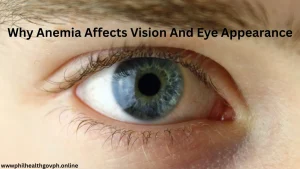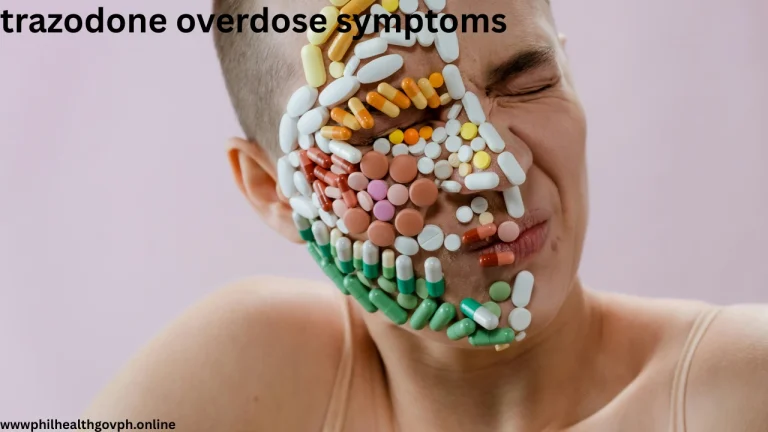Anemia Symptoms Eyes: Common Visual Signs to Watch For
Anemia symptoms eyes can reveal important clues about your overall health. The eyes are often the first place where early changes from anemia can be spotted. When the body lacks enough healthy red blood cells, oxygen delivery to tissues decreases, and the eyes are among the most visible places to show this shortage. Recognizing these signs early can help you seek medical care before the condition becomes severe.
You May Like: dorsal vein damage symptoms
Why Anemia Affects Vision And Eye Appearance

Anemia affects the eyes because red blood cells carry oxygen. Without enough oxygen, eye tissues weaken and blood vessels become fragile. This can cause changes in color, clarity, and comfort of the eyes. The reduced blood supply impacts both the outer appearance and the internal structures of the eyes. Some symptoms are visible to the naked eye, while others require an eye examination.
Anemia Symptoms Eyes: Pale Inner Eyelids
One of the simplest ways to check for anemia is by looking at the inner eyelids. Normally, the tissue inside the lower eyelid is bright red due to healthy blood flow. In people with anemia, this area may look pale pink or even yellowish. This happens because there are fewer red blood cells in circulation, making blood less vibrant in color. Eye specialists often check this sign during a physical exam.
Anemia Symptoms Eyes: Dark Circles And Tired Appearance
Dark circles under the eyes are often blamed on lack of sleep, but they can also be linked to anemia. When oxygen levels in the blood are low, the thin skin under the eyes reveals the underlying veins, making them appear darker. This tired look is made worse by fatigue, another key symptom of anemia. Even with enough rest, these circles may not improve until the anemia is treated.
Anemia Symptoms Eyes: Blurred Vision
Some people with anemia experience blurred or hazy vision. This happens when less oxygen reaches the retina, the part of the eye responsible for processing images. Without enough oxygen, retinal cells can’t function properly, leading to temporary vision changes. If anemia is left untreated, this can sometimes cause permanent damage.
Anemia Symptoms Eyes: Burning, Dryness, And Discomfort
Anemia can cause a burning sensation or dryness in the eyes. Oxygen is necessary for healthy tear production. When oxygen levels drop, the tear glands may produce fewer tears, and the tears may be less effective in keeping the eyes moist. Dry eyes can cause irritation, redness, and a gritty feeling.
Anemia Symptoms Eyes: Floaters And Light Sensitivity
In some cases, anemia can cause floaters—small dark shapes that drift across your vision. These are usually harmless but can be distracting. Light sensitivity is another possible symptom. This happens when the retina becomes more sensitive due to poor oxygen supply, making even normal lighting feel too bright.
Anemia Symptoms Eyes: Retinal Changes (Anemic Retinopathy)
Severe anemia may lead to changes inside the eyes known as anemic retinopathy. This condition can cause small hemorrhages, cotton-wool spots, and swelling in the retina. These changes occur when fragile blood vessels inside the eye are damaged by low oxygen levels. Mild cases may not affect vision much, but severe retinopathy can cause significant vision loss.
Anemia Symptoms Eyes: Yellowing Of The Whites (Scleral Icterus)
If the whites of your eyes turn yellow, it could be a sign of hemolytic anemia. This form of anemia occurs when red blood cells break down faster than they are made, causing a buildup of bilirubin in the blood. The yellow tint is caused by this buildup and should be checked by a doctor immediately.
Anemia Symptoms Eyes: Headache And Eye Strain
Poor oxygen delivery to the eyes can also cause headaches and eye strain. When vision is slightly blurred, the eyes work harder to focus, leading to discomfort. Over time, this constant effort can make reading, computer use, or watching TV uncomfortable.
Anemia Symptoms Eyes: Link Between Iron Deficiency And Eye Health
Iron deficiency is the most common cause of anemia. Without enough iron, the body cannot produce enough hemoglobin, the protein that carries oxygen in red blood cells. Low iron affects blood vessels in the eyes, and over time, the lack of oxygen can damage sensitive eye tissues, sometimes causing long-term vision problems.
Anemia Symptoms Eyes: Who Is Most At Risk
While anyone can develop anemia, certain groups have a higher risk of experiencing eye-related symptoms:
-
Women with heavy menstrual bleeding
-
Pregnant women
-
People with chronic illnesses
-
Vegetarians or vegans lacking iron-rich foods
-
Older adults with poor nutrition
These groups should monitor their eye health closely.
Anemia Symptoms Eyes: In Children And Teenagers
In children, anemia symptoms eyes may include pale eyelids, a tired appearance, and difficulty concentrating. They may rub their eyes often or complain about trouble seeing clearly. Because children’s bodies are still developing, untreated anemia can have lasting effects on vision and learning.
Anemia Symptoms Eyes: In Older Adults
Older adults may notice gradual changes in vision, increased glare sensitivity, and reduced night vision. These symptoms are sometimes mistaken for normal aging, but anemia can be an underlying cause. Regular check-ups and blood tests are important for early detection.
Anemia Symptoms Eyes: When To Seek Medical Advice
Any sudden change in vision, yellowing of the eyes, or ongoing dryness should be checked by a healthcare professional. If you suspect anemia because of fatigue, dizziness, or shortness of breath, a blood test can confirm the diagnosis. Early treatment can prevent serious eye damage.
Anemia Symptoms Eyes: Diagnosis Process
Diagnosing anemia often involves both eye and blood tests. An eye doctor may notice pale conjunctiva, retinal changes, or yellowing of the sclera. A primary care doctor can confirm anemia through a complete blood count, which shows red blood cell levels, hemoglobin, and other important values.
Anemia Symptoms Eyes: Treatment Options
Treating anemia can improve eye symptoms significantly. The treatment depends on the cause:
-
Iron deficiency anemia: Iron supplements and dietary changes.
-
Vitamin B12 or folate deficiency: Supplements or injections.
-
Chronic disease anemia: Managing the underlying illness.
-
Hemolytic anemia: Medications to slow red blood cell breakdown.
Severe anemia may require blood transfusions. Once oxygen levels return to normal, most eye symptoms improve.
Anemia Symptoms Eyes: Prevention Tips
You can reduce the risk of anemia-related eye symptoms by:
-
Eating iron-rich foods like lean meat, fish, beans, and leafy greens
-
Including vitamin C-rich foods to help with iron absorption
-
Having regular blood tests if you’re in a high-risk group
-
Seeking early treatment for any eye changes or vision problems
Anemia Symptoms Eyes: Recovery Timeline
With proper treatment, eye symptoms often improve within weeks to months. Pale eyelids and dark circles may fade quickly, while retinal changes can take longer to heal. Recovery depends on the severity of the anemia and how well the underlying cause is addressed.
Frequently Asked Question
What Are The First Eye Symptoms Of Anemia?
The first signs often include pale inner eyelids, dark circles, and a generally tired appearance. These occur due to reduced blood oxygen levels.
Can Anemia Cause Blurred Vision?
Yes, anemia can cause blurred vision because the retina receives less oxygen. In severe cases, this can progress to retinal damage.
Does Anemia Make Eyes Yellow?
Yes, in hemolytic anemia, the breakdown of red blood cells can lead to yellowing of the whites of the eyes due to bilirubin buildup.
Are Eye Symptoms Of Anemia Reversible?
Most eye symptoms improve once anemia is treated. However, severe retinal damage may take longer to heal or may be permanent.
Should I See An Eye Doctor For Anemia Symptoms Eyes?
Yes, an eye doctor can spot early changes linked to anemia. Combined with a blood test, this helps confirm the diagnosis and guide treatment.
Conclusion
Anemia symptoms eyes can include pale inner eyelids, dark circles, blurred vision, burning or dryness, floaters, retinal changes, yellowing of the whites, and eye strain. These signs occur because the eyes rely on a healthy blood supply or oxygen and nutrients. Noticing these changes early can help you get a timely diagnosis and treatment. If you observe these symptoms, seek medical advice promptly—addressing anemia early not only restores eye health but also improves overall well-being.
People Also Read: best medical schools in the us






